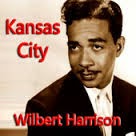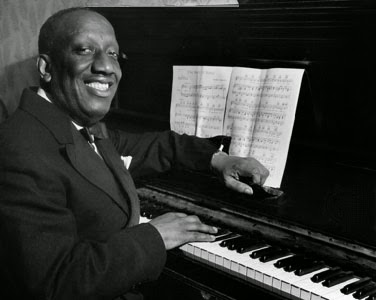[et_pb_section][et_pb_row][et_pb_column type=”4_4″][et_pb_text]
 |
| Mike Stoller (left) with Jerry Leiber in the 1970s. |
Just as most non-classical music – rock and roll, R&B, jazz, pop, etc. – came from the blues, so one of pop music’s truly landmark song-writing partnerships began specialising solely in blues and R&B songs. I’m talking, of course, about the American rock and roll/R&B composers-supreme, Jerry Leiber (lyrics) and Mike Stoller (music).
My last post touched on Leiber and Stoller’s massive contribution to the birth of British blues rock, especially with all the R&B songs they wrote for the Coasters. When you hear about early British bands playing early American rock & roll before the Beatles broke, Leiber and Stoller songs were a great part of what they played.
This included the Beatles themselves, whose recording debut in January 1961 (famously rejected by Decca) included covers of the Coasters’ “Searchin” and “Cool Cats”, both written in the 50s by Leiber and Stoller.
 |
Leiber-Stollers’ Kansas City featured on Beatles For Sale.
The Beatles cut their teeth on Leiber-Stoller songs. |
The Beatles also recorded, on their 1964 “Beatles
For Sale” album, Leiber-Stoller’s 1952 classic, “Kansas City”, written in
homage to the marvellous Kansas blues shouter and rock & roll pioneer, Big
Joe T
First recorded by the boogie woogie pianist-cum-vocalist, Little Willie Littlefield, as “K.C. Lovin’” in 1953, “Kansas City” has become one of the most covered songs in history.
It has over 300 versions include those by James Brown, Brenda Lee, Fats Domino, Muddy Waters and Little Richard.
In an interview with Rolling Stone magazine some 30 years ago, Jerry Leiber said the success of “Kansas City” had totally surprised him. “I had a big fight with Mike (Stoller) about Kansas City. I originally sang a traditional blues on it, like Howlin’ Wolf might have sung it. Mike said, ‘I don’t want to write just another blues. There are a thousand numbers out there like it. I got a tune for it.’ I told him it sounded phony.
“I gave him all sorts of garbage. And he won out. When we did it with Little Willie Littlefield, I thought it was all right. It didn’t kill me. Then, when Wilbert Harrison came out with it, then it sound right.
But it took all that time to convince me that he (Mike Stoller) was right about that melody.” And here it is, friends.melody.” And here it is, friends. Leiber-Stoller’s Kansas City by Wilbert Harrison on the link below:
 |
| Wilbert’s version of KC sounded right, said Leiber |
https://www.youtube.com/watch?v=vE0T-EA1294
Jerry Leiber from Baltimore, and Mike Stoller from Long Island, New York, were just 19-year-old kids, based in Los Angeles, when they composed “Kansas City”. Other classics the pair wrote in 1952 included “Hound Dog”
written for Big Mama Thornton, and made world-famous by Elvis Presley, and their first hit, “Hard Times”, for Texas blues singer Charles Brown, which reached number seven on the R&B charts.
Even earlier, both aged 18, Leiber & Stoller had written their first recorded song, “That’s What The Good Book Says”, for the influential L.A. R&B group, Bobby Nunn and the Robins in 1951. Check the link and take a listen to rock & roll history.
With two members of the Robins later forming the Coasters, you can see the importance of song writers knowing the artists they’re writing for. Other Leiber & Stoller pearls made famous by the Coasters included “Poison Ivy”, “Love Potion No. 9” (given to The Clovers first), “I’m A Hog For You (Baby)”, “Along Came Jones”, “Charlie Brown” and “Yakety Yak”. Just some of many.
 |
| Jimmy Witherspoon |
But let’s step back a moment to the second Leiber-Stoller song recorded, “Real Ugly Woman” by jump blues singer Jimmy Witherspoon, also released in 1951.
This was decades before political correctness, remember.
In 1953, Jerry Leiber and Mike Stoller struck gold with one of rock’s milestones, the 12-bar blues “Hound Dog”, written
especially for the 26-year-old comedienne turned blues singer, Willie Mae ‘Big Mama’ Thornton. It sold two million copies, spending seven weeks topping the
R&B charts. Big Mama, Leiber told Rolling Stone, “looked like the biggest, baddest, saltiest chick you would ever see. And she was mean, a ‘lady bear’, as they used to call ‘em.
She must have been 350 pounds, and she had all these scars all over her face. I had to write a song for her that basically said, ‘Go fuck yourself’; but how to do it without actually saying it?”
The message behind “Hound Dog”, said Leiber, was
essentially, ‘You ain’t nothin’ but a mother fucker’.
 |
| A big pic for a Big Mama |
Mama, added Stoller, “was a wonderful blues singer, with a great moaning style. But it was as much her appearance as her blues style that influenced the writing of ‘Hound Dog’ and the idea that we wanted her to growl it; which she rejected at first. Her thing was ‘Don’t you tell me how to sing no song!’”
“Hound Dog”, cut in August 1952, was the first record Leiber and Stoller produced totally by themselves. Not bad for a pair of 19-year-olds. They should have been supervised by the great Johnny Otis but convinced Otis to play the drums as the session drummer couldn’t get the rhythm they
wanted. During the rehearsal, says the Rolling Stone interview, “Leiber objected to Big Mama crooning the song “like Frank Sinatra in “The Wee Small Hours of the Morning”.
“And I’m looking at her, and I’m a little intimidated by the razor scars on her face, and she’s about 280-320 pounds, and I said, ‘It don’t go that way’. And she looked at me like looks could kill and said – and this was when I found out I was white – ‘White boy, don’t you be tellin’ me how to sing the blues.”
Leiber then sang the song they way they wanted it done. Said Stoller: “Big Mama heard how Jerry was singing the thing. She heard the rough-and-tough of the song and, just as important, the implicit sexual humor. In short, she got it.”
The rest, as they say, is history, especially after Elvis Presley recorded “Hound Dog” in 1956, selling ten million copies and topping the American pop chart for 11 weeks, a record that stood until 1992.
Leiber-Stoller then proceeded to write a string of more hits for Elvis including “Jailhouse Rock”, Loving You” and “King Creole”. They co-wrote “On Broadway” and “There Goes My Baby” for the Drifters, introducing strings and the lavish production values that would later become
synonymous with soul. And watching and studying their production techniques was their session guitarist, Phil Spector, with whom they then wrote “Spanish Harlem”. Then, when the Drifters’ Ben E King went solo, Leiber-Stoller wrote “Stand By Me” with him.
 |
| A still from the Shangra-Las’ video, see link below … |
Then came Leiber-Stoller’s girl group phase where their hits included “Leader of the Pack” for the Shangra-Las in 1964, “Chapel of Love” for the Dixie Cups and “Tell Him” for the Exciters.
The UK’s Cliff Richard had a number one hit all over the world with Leiber-Stoller’s “Lucky Lips” in 1963. Leiber and Stoller even wrote the English lyrics to the Italian number that became Shirley Bassey’s theme song, “I Who Have Nothing”, and Jerry Leiber co-wrote “Jackson”, a worldwide pop hit for Lee Hazelwood and Nancy Sinatra.
More recently, (if 1972 is recent) Leiber and Stoller produced the million-selling “Stuck In The Middle With You” in London for Stealer’s Wheel. While Wikipedia says differently, I heard the song was written by Gerry Rafferty about film actor and comedian Billy Connelly referring to their time together in the Scottish folk trio the Humble Bums. Banjoist Connelly would spend half the gigs telling jokes.
 |
The Broadway show, Smokey Joe’s Cafe, was based on 39
Leiber-Stoller songs. |
Americans will know “Smokey Joe’s Café”, the Broadway musical about Leiber-Stoller that featured 39 of the duo’s hits, running from 1995 to 2000. Its 2,036 performances make it the longest Broadway musical in history and the Original Broadway Cast Recording album, won a Grammy award in 1995. Unfortunately, I missed its Melbourne run-out in Australia in 1995 being in London. A year later I missed the London show because I spent its two year run there in Melbourne. Such is life.
 |
The great stride pianist James P. Johnson taught
Mike Stoller as a boy. |
Lyricist Jerry Leiber died in Los Angeles in 2011 aged 78; but Mike Stoller, who took piano lessons from the great stride pioneer, Jimmy Johnson, in the early 1940s, lives on. He is now 88 (as in July 2021). It was Jimmy
Johnson, he once said, who taught him how to play 12-bar blues when Stoller was 10 or 11. Talk about learning from the best.
Together, Jerry Leiber and Mike Stoller wrote over 70 chart hits. Will we ever see their like again?
[/et_pb_text][/et_pb_column][/et_pb_row][/et_pb_section]












